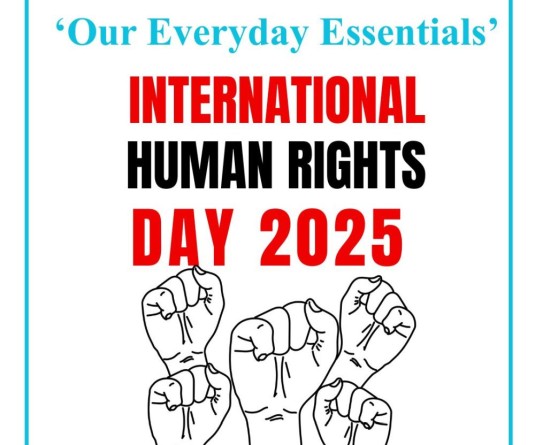
Morung Express News
Dimapur | July 13
Minors forced or compelled to work have been a huge talking-point worldwide, particularly in the developing third-world. Nagaland of late is also attracting the attention of Child Rights activists in this matter.
By international convention, Child Labor is defined as “all economic activity for children under 12 years, any work for those aged 12-14 of sufficient hours per week to undermine their health or education, and all ‘hazardous work’ which could threaten the health of children under 18”. On the other hand, the kind of work child laborers in Nagaland are employed in, may not be totally ‘hazardous’ in nature. Yet the ubiquitous practice of employing minors in individual Naga households has come on the radar of upcoming local Child Rights activists, who are determined to stop this ‘inhuman’ practice at all cost.
Community Educational Centre Society (CECS), active since 2001, is vocally taking up initiatives to drum up government and society’s support in its endeavour. The centre is actively advocating the implementation of ChildLine 1098 – a toll free 24-hour phone service for children in need of care and protection. Project director of CECS Subonenba Longkumer said that the objective of the centre is to create awareness about the rights of children and make people aware of the Child Labour Act. Himself orphaned at a young age, Longkumer echoed the importance of the government’s role in the protection of Child Rights when he said: “As an NGO we cannot take the law in our hands.” The role of the government is very crucial, he added. At present, the centre is closely working in coordination with the department of Social Welfare, Women & Child Development.
Longkumer estimated around 500-700 children working odd jobs in Dimapur alone. This number, he said, is without taking into account the countless number of minors employed as domestic helps in individual households. “Seventy to eighty percent of the households in Dimapur have at least one child labourer”, he estimated. His projection is supported by a research which the centre is currently undertaking discreetly. The research is covering Kohima and Dimapur.
According to CECS estimation minors working as domestic helps originate from eastern Nagaland, Arunachal Pradesh, the Indo-Burmese border and tribal from Assam. Among it sixty percent of the children are from Mon, he said. He said that ‘Childline 1098’ is already enforced in Assam, Meghalaya and Manipur where it is showing results. The Mizoram government has also already approved, he said.
In Nagaland, Longkumer expressed hope that the helpline will be fully functional in all the district headquarters by the year’s end. Any child who feels he/she is being abused can take the assistance of the toll free number to which volunteers will respond immediately. Besides it would provide assistance in cases related to children in conflict with the law, substance abuse etc.
If the helpline does get fully enforced here, the state would require rehabilitation homes for ‘rescued’ children. Nagaland at present has only one juvenile observation home at Pherima in Kohima district.
Longkumer said that the state’s lone juvenile observation home is not functioning up to the mark. Recounting the observation of Avik Mitra, programme coordinator of Childline India Foundation (CIF), Kolkata during a visit to the centre last June, Longkumer said that Mitra was not very satisfied with its functioning.
CIF is a non-profit organisation active in the fight against child abuse in the country. It was appointed by the union ministry of Social Justice and Empowerment as the country’s nodal agency for initiating and sustaining child help lines across the nation. Nevertheless, Longkumer expressed optimism that every district headquarter in the state will have juvenile observation homes and arbitration centres in the next one or two years.
During a consultation meeting of NGOs and state government officials in the month of June, Longkumer had emphatically broached the seemingly ‘legal’ practice of employing minors in Naga households.
He held that families who have employed minors as domestic helps may be sending them to school and providing them decent, meals and clothing but he questioned the sincerity of the employers in giving such children proper education. He elucidated that the majority of the domestic helps are only send to government primary schools or not at all. Moreover, even when at home they do not get enough time for rest and school books, overburdened by household chores.
He surmised that not all the children will be content with that kind of life. Eventually the society will be to blame and suffer when they grow up, carrying with them the gloomy memory of unhappy childhood. Despite the international community’s as well as individual nations’ effort to the outlaw the practice, the world has so far not succeeded in completely ridding child labour.
India for instance has been grappling with the issue for decades which culminated with the landmark legislation - Child Labour (Prohibition & Regulation) Act way back in1986.
This Act describes ‘child as a person who has not completed his fourteen years of age’. A proposal was mooted by the union ministry of labour in 2008 to increase the age bar of ‘child labour’, as stipulated under the Act, to 18 years.
However, India is yet to make any a positive progress in alleviating the plight of the child labour notwithstanding the government’s effort. Today, millions of children across the country are employed in a wide array of workplaces which according to child rights advocacy groups would prove detrimental in the growth of their physical and mental well-being.



.jpg)


